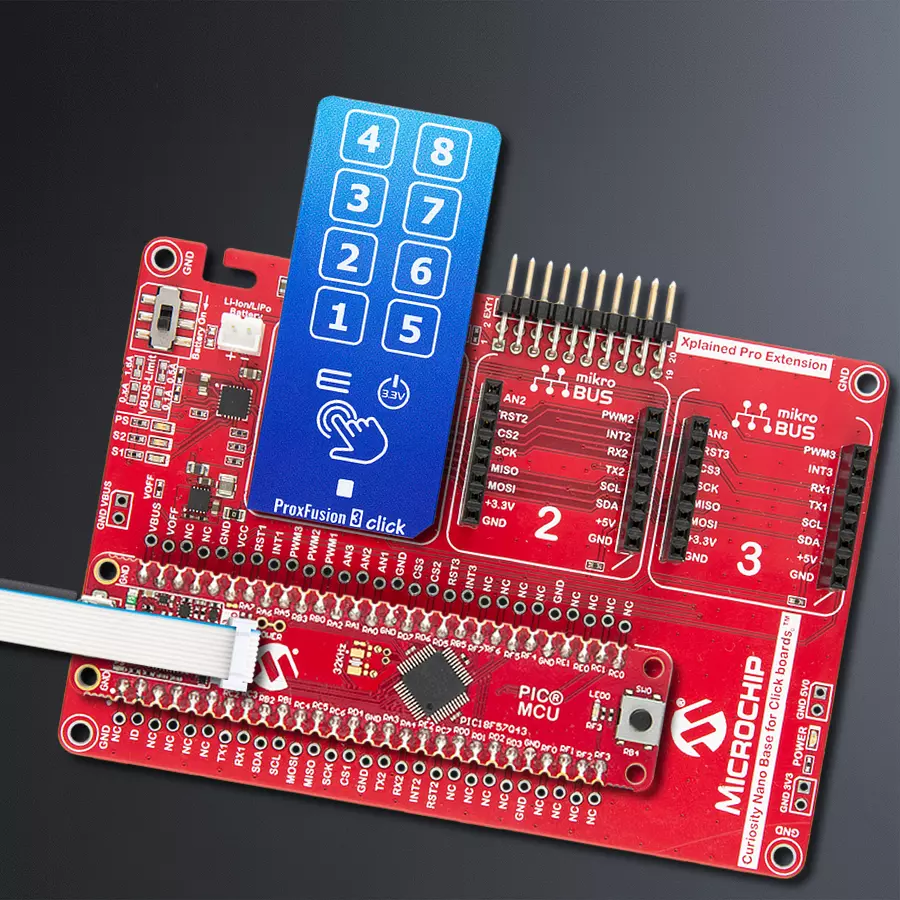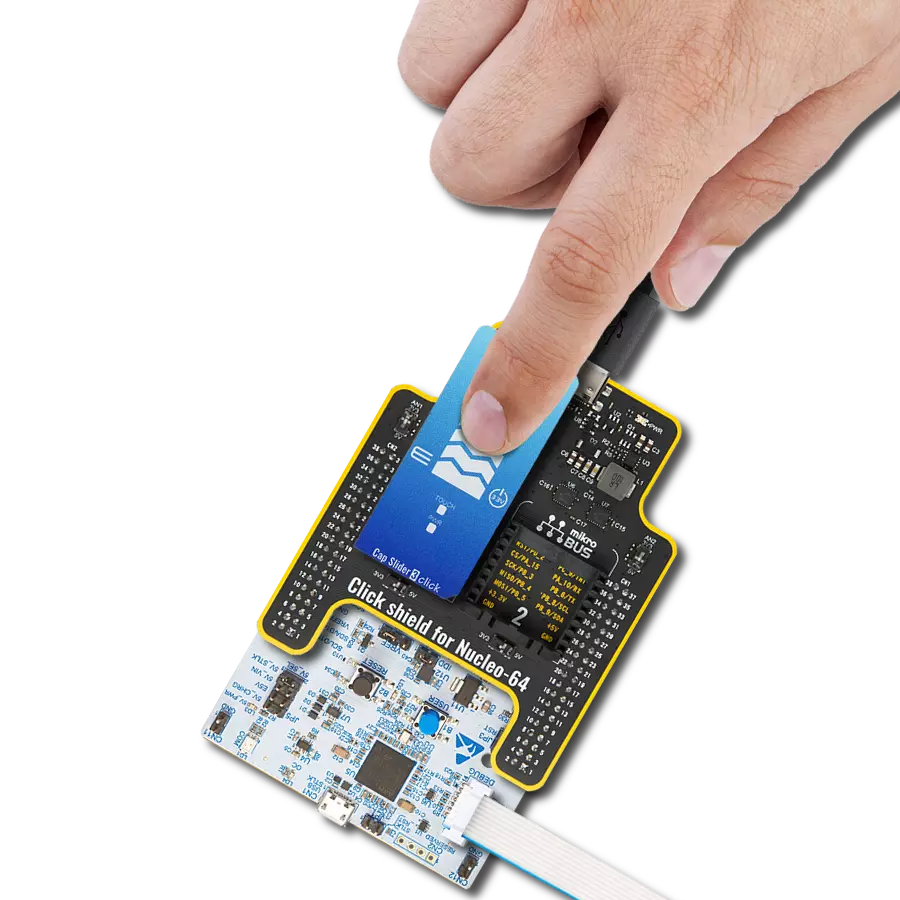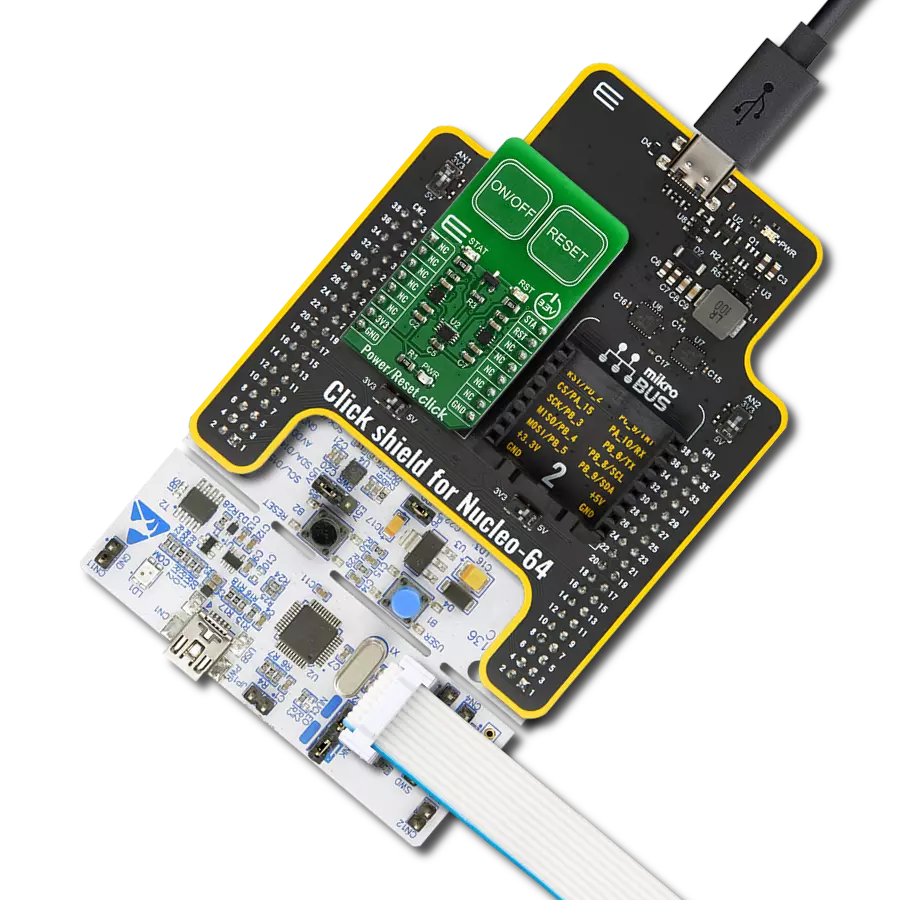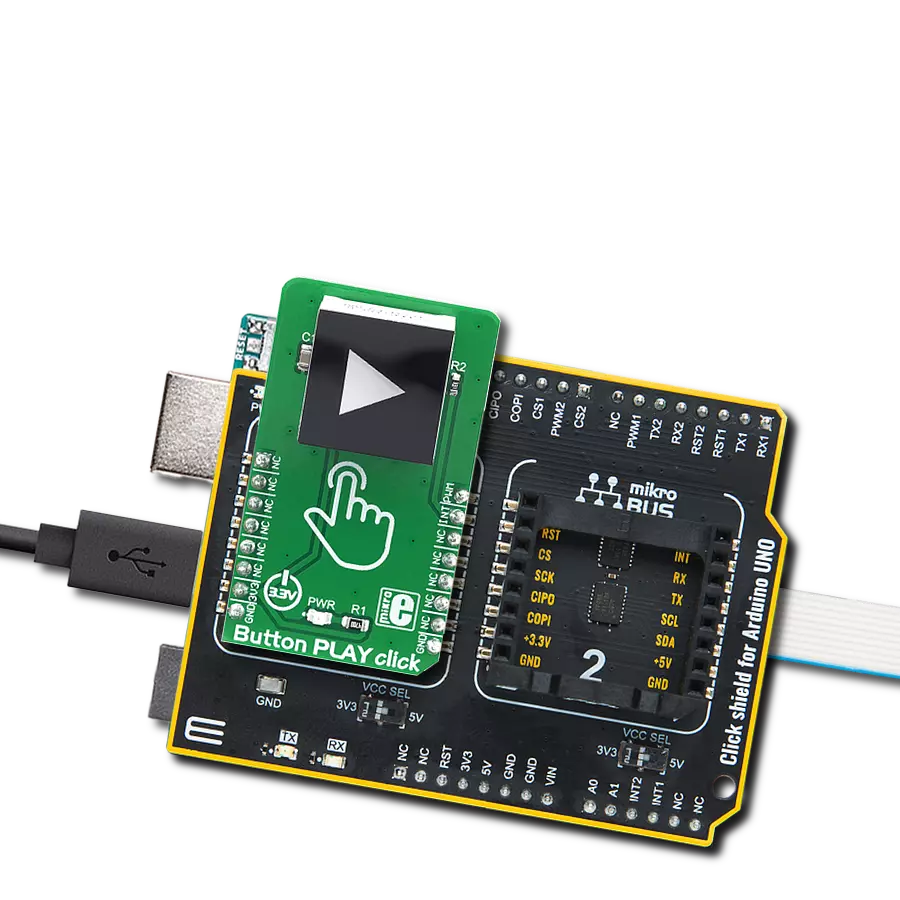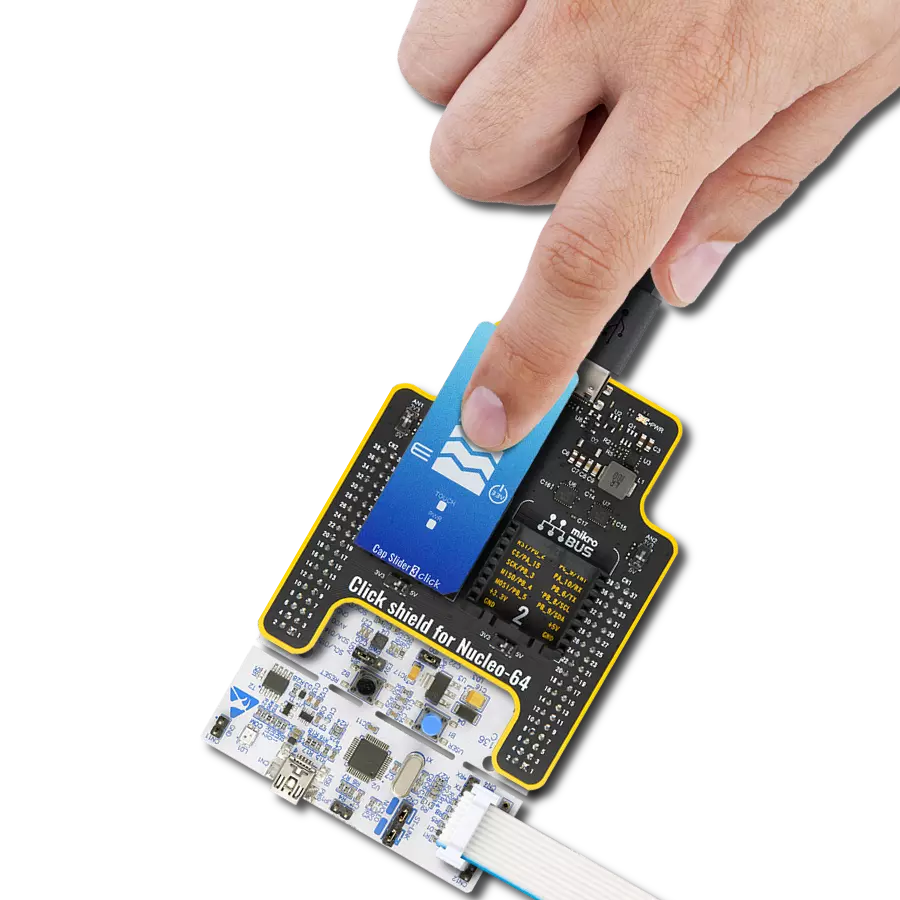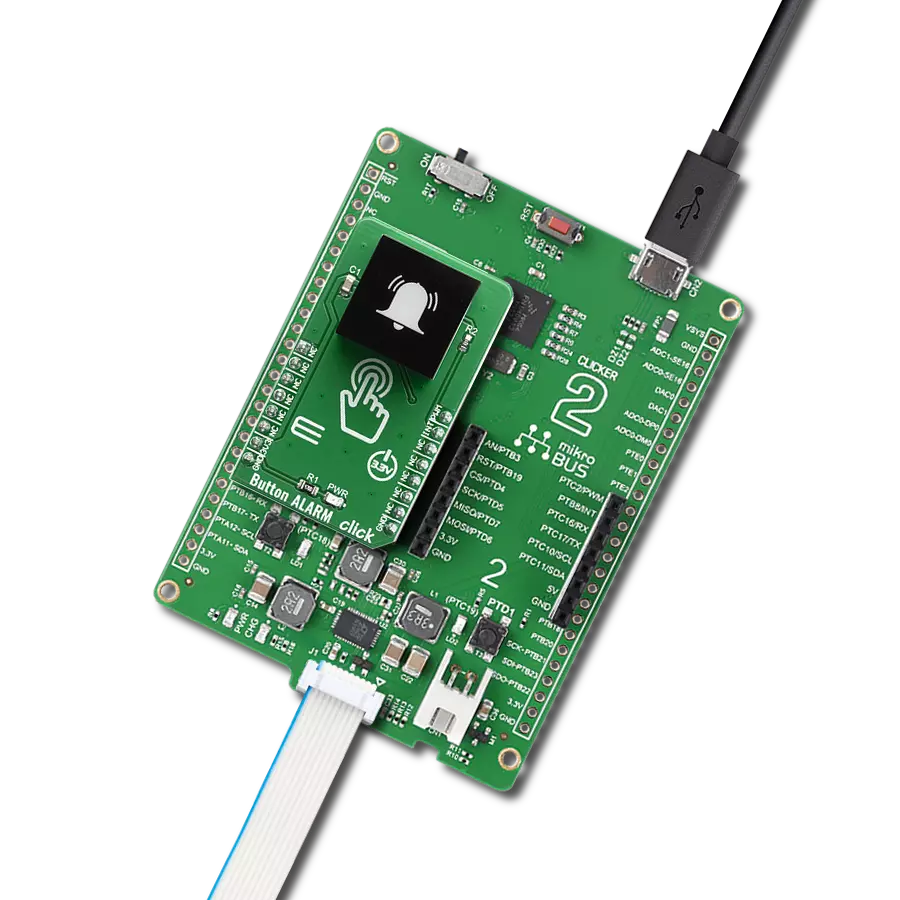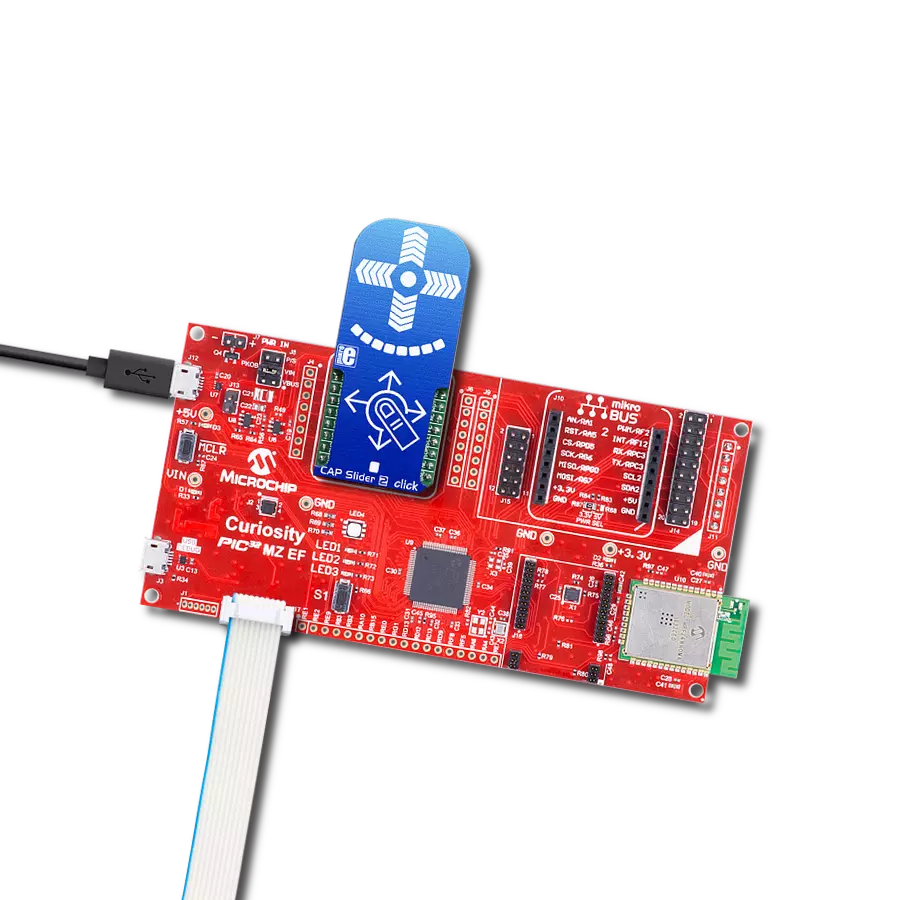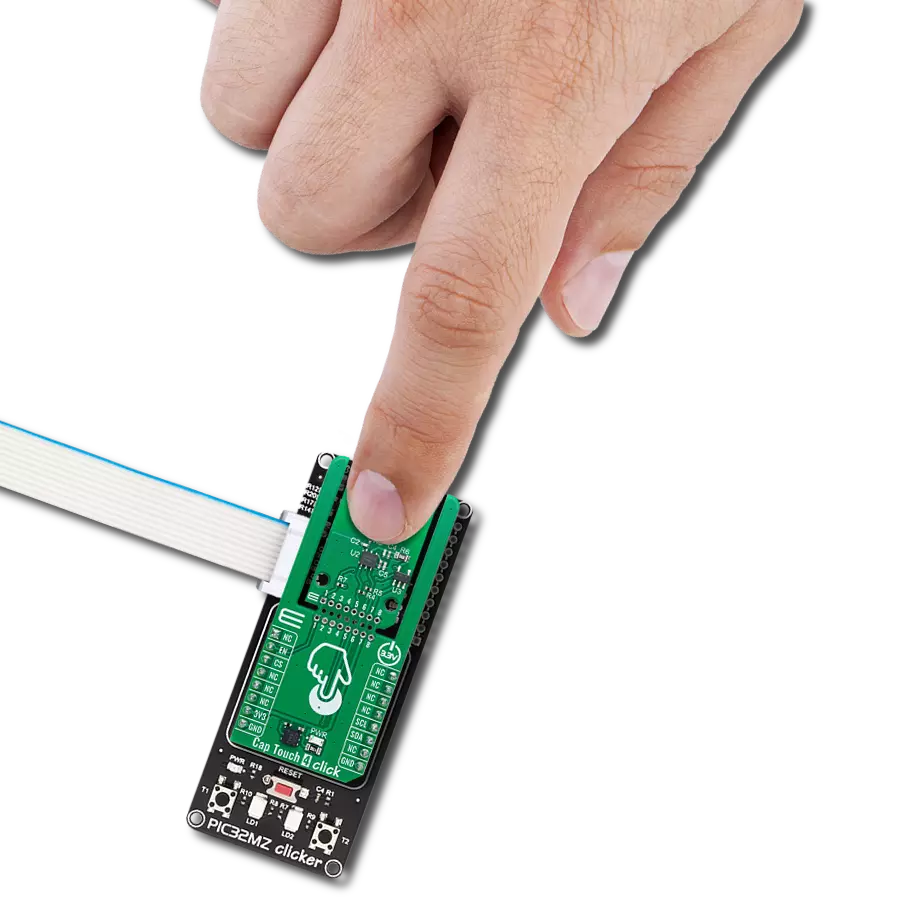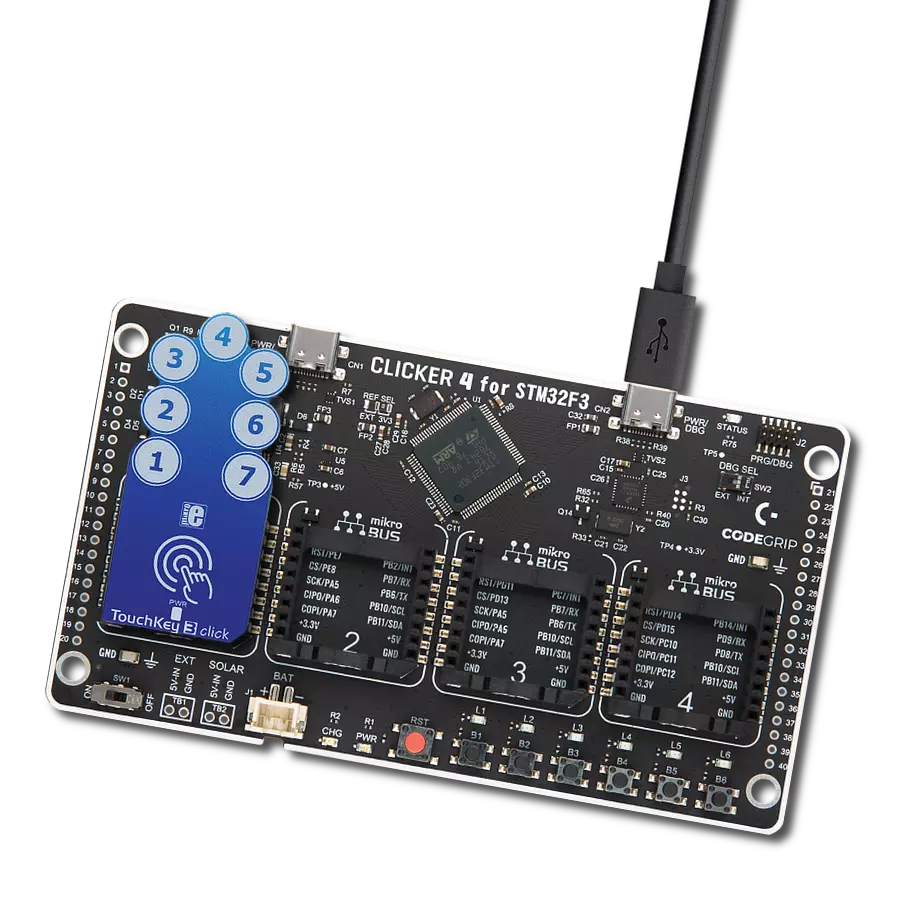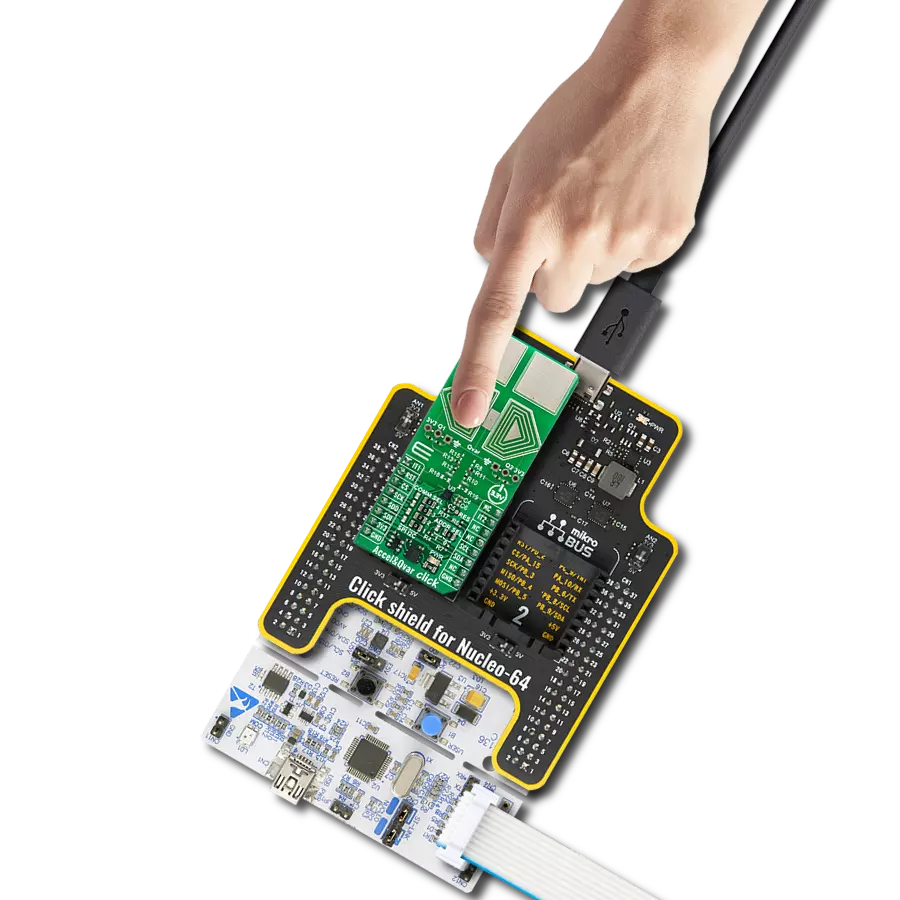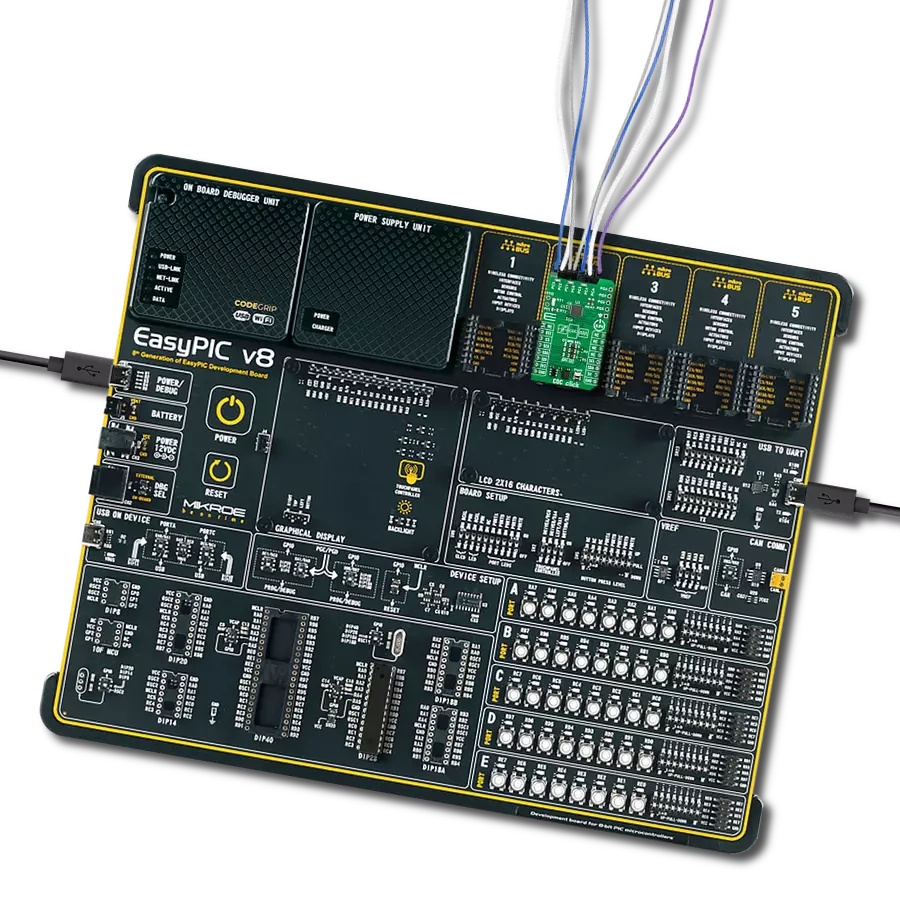Add a touch of elegance to your solutions with our capacitive touch buttons, which provide a visually appealing and futuristic element to any electronic project
A
A
Hardware Overview
How does it work?
ProxFusion 3 Click is based on the IQS269A, an eight-channel ProxFusion® capacitive, proximity, and touch controller with additional Hall-effect and inductive sensing, best-in-class signal-to-noise ratio, and low power consumption from Azoteq. The ProxFusion® module detects the capacitance change with a charge-transfer method. In effect, the IQS269A represents a low-power microcontroller that features ProxFusion® technology for high-end proximity and touch applications and provides a highly integrated capacitive-touch solution with flexibility, unique combination sensing, and long-term stability. The ProxFusion® module can periodically wake the CPU during low power mode based on a ProxFusion® timer source. Other features include automatic tuning and differential offset
compensation for sense electrodes. The Click board™ has eight PCB pads to sense touch or proximity events. These pads are the only elements on the top side of the board, allowing placement of the protective acrylic plexiglass layer. These pads can be programmed to generate a touch event when pressed and released. If a touch event is detected on one of the onboard pads, the state of the corresponding channel will be changed, indicating an activated channel; more precisely, touch has been detected on that specific channel. ProxFusion 3 Click communicates with MCU using a standard two-wire I2C interface that supports Fast Mode with a frequency of up to 400kHz. In addition to these pins, the IQS269A has a ready interrupt line, routed on the INT pin of the mikroBUS™ socket, that indicates a
communication window, and one general-purpose pin labeled as GP and routed on the PWM pin of the mikroBUS™ socket. The GP pin represents a custom touch-out/sync-in function with which one can assign a touch flag state of any channel. Besides, it also allows the choice of the least significant bit (LSB) of its I2C slave address by positioning the SMD jumper labeled as ADDR SEL to an appropriate position marked as 0 and 1. This Click board™ is designed to be operated only with a 3.3V logic voltage level. A proper logic voltage level conversion should be performed before the Click board™ is used with MCUs with different logic levels. However, the Click board™ comes equipped with a library containing functions and an example code that can be used as a reference for further development.
Features overview
Development board
PIC18F57Q43 Curiosity Nano evaluation kit is a cutting-edge hardware platform designed to evaluate microcontrollers within the PIC18-Q43 family. Central to its design is the inclusion of the powerful PIC18F57Q43 microcontroller (MCU), offering advanced functionalities and robust performance. Key features of this evaluation kit include a yellow user LED and a responsive
mechanical user switch, providing seamless interaction and testing. The provision for a 32.768kHz crystal footprint ensures precision timing capabilities. With an onboard debugger boasting a green power and status LED, programming and debugging become intuitive and efficient. Further enhancing its utility is the Virtual serial port (CDC) and a debug GPIO channel (DGI
GPIO), offering extensive connectivity options. Powered via USB, this kit boasts an adjustable target voltage feature facilitated by the MIC5353 LDO regulator, ensuring stable operation with an output voltage ranging from 1.8V to 5.1V, with a maximum output current of 500mA, subject to ambient temperature and voltage constraints.
Microcontroller Overview
MCU Card / MCU
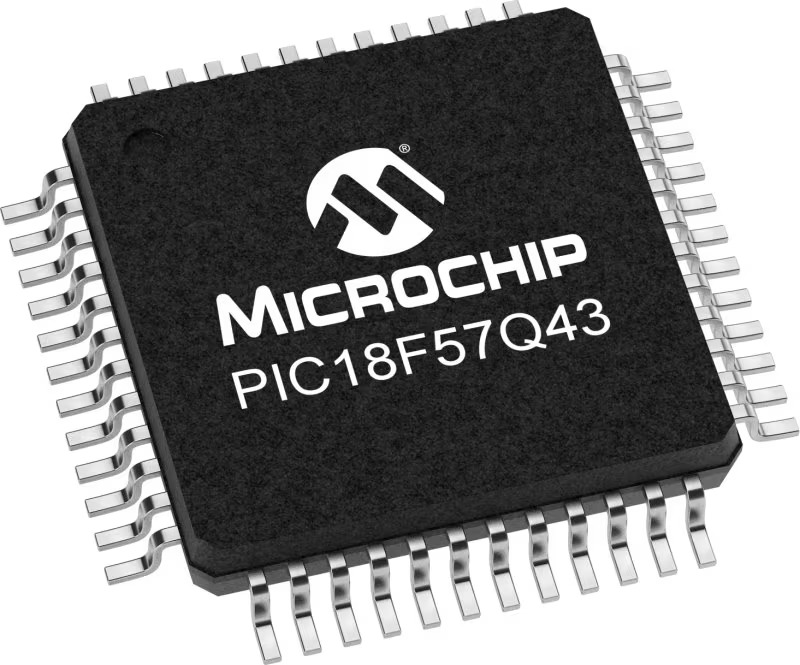
Architecture
PIC
MCU Memory (KB)
128
Silicon Vendor
Microchip
Pin count
48
RAM (Bytes)
8196
You complete me!
Accessories
Curiosity Nano Base for Click boards is a versatile hardware extension platform created to streamline the integration between Curiosity Nano kits and extension boards, tailored explicitly for the mikroBUS™-standardized Click boards and Xplained Pro extension boards. This innovative base board (shield) offers seamless connectivity and expansion possibilities, simplifying experimentation and development. Key features include USB power compatibility from the Curiosity Nano kit, alongside an alternative external power input option for enhanced flexibility. The onboard Li-Ion/LiPo charger and management circuit ensure smooth operation for battery-powered applications, simplifying usage and management. Moreover, the base incorporates a fixed 3.3V PSU dedicated to target and mikroBUS™ power rails, alongside a fixed 5.0V boost converter catering to 5V power rails of mikroBUS™ sockets, providing stable power delivery for various connected devices.
Used MCU Pins
mikroBUS™ mapper
Take a closer look
Click board™ Schematic

Step by step
Project assembly
Software Support
Library Description
This library contains API for ProxFusion 3 Click driver.
Key functions:
proxfusion3_get_touch- ProxFusion 3 get touch functionproxfusion3_check_touch_event- ProxFusion 3 check touch event functionproxfusion3_get_version_info- ProxFusion 3 get version info data function.
Open Source
Code example
The complete application code and a ready-to-use project are available through the NECTO Studio Package Manager for direct installation in the NECTO Studio. The application code can also be found on the MIKROE GitHub account.
/*!
* @file main.c
* @brief ProxFusion3 Click example
*
* # Description
* Display information about the last detected touch.
*
* The demo application is composed of two sections :
*
* ## Application Init
* Initializes I2C driver, read and display version info value
* and start to write log.
*
* ## Application Task
* This is an example that demonstrates the use of the ProxFusion 3 Click board.
* In this example, we check the touch event and display the last detected touch.
* Results are being sent to the Usart Terminal where you can track their changes.
*
* @author Nenad Filipovic
*
*/
#include "board.h"
#include "log.h"
#include "proxfusion3.h"
static proxfusion3_t proxfusion3;
static log_t logger;
static uint8_t product_number;
static uint8_t software_version;
void application_init ( void ) {
log_cfg_t log_cfg; /**< Logger config object. */
proxfusion3_cfg_t proxfusion3_cfg; /**< Click config object. */
/**
* Logger initialization.
* Default baud rate: 115200
* Default log level: LOG_LEVEL_DEBUG
* @note If USB_UART_RX and USB_UART_TX
* are defined as HAL_PIN_NC, you will
* need to define them manually for log to work.
* See @b LOG_MAP_USB_UART macro definition for detailed explanation.
*/
LOG_MAP_USB_UART( log_cfg );
log_init( &logger, &log_cfg );
log_printf( &logger, "\r\n---------------------------\r\n" );
log_info( &logger, " Application Init " );
// Click initialization.
proxfusion3_cfg_setup( &proxfusion3_cfg );
PROXFUSION3_MAP_MIKROBUS( proxfusion3_cfg, MIKROBUS_1 );
err_t init_flag = proxfusion3_init( &proxfusion3, &proxfusion3_cfg );
if ( init_flag == I2C_MASTER_ERROR ) {
log_error( &logger, " Application Init Error. " );
log_info( &logger, " Please, run program again... " );
for ( ; ; );
}
proxfusion3_default_cfg ( &proxfusion3 );
log_info( &logger, " Application Task " );
log_printf( &logger, "---------------------------\r\n" );
Delay_ms ( 500 );
proxfusion3_get_version_info( &proxfusion3, &product_number, &software_version );
log_printf( &logger, " Product Number : 0x%.2X \r\n", ( uint16_t ) product_number );
log_printf( &logger, " Software Version : 0x%.2X \r\n", ( uint16_t ) software_version );
log_printf( &logger, "---------------------------\r\n" );
Delay_ms ( 1000 );
log_printf( &logger, " Touch Detection \r\n" );
log_printf( &logger, "---------------------------\r\n" );
}
void application_task ( void ) {
if ( proxfusion3_check_touch_event( &proxfusion3 ) == PROXFUSION3_EVENT_TOUCH ) {
uint8_t touch_data = proxfusion3_get_touch( &proxfusion3 );
Delay_ms ( 100 );
switch ( touch_data ) {
case PROXFUSION3_TOUCH_POS_8: {
log_printf( &logger, " >>> 8 <<< \r\n" );
break;
}
case PROXFUSION3_TOUCH_POS_7: {
log_printf( &logger, " >>> 7 <<< \r\n" );
break;
}
case PROXFUSION3_TOUCH_POS_6: {
log_printf( &logger, " >>> 6 <<< \r\n" );
break;
}
case PROXFUSION3_TOUCH_POS_5: {
log_printf( &logger, " >>> 5 <<< \r\n" );
break;
}
case PROXFUSION3_TOUCH_POS_4: {
log_printf( &logger, " >>> 4 <<< \r\n" );
break;
}
case PROXFUSION3_TOUCH_POS_3: {
log_printf( &logger, " >>> 3 <<< \r\n" );
break;
}
case PROXFUSION3_TOUCH_POS_2: {
log_printf( &logger, " >>> 2 <<< \r\n" );
break;
}
case PROXFUSION3_TOUCH_POS_1: {
log_printf( &logger, " >>> 1 <<< \r\n" );
break;
}
default: {
Delay_ms ( 10 );
break;
}
}
Delay_ms ( 10 );
} else {
Delay_ms ( 10 );
}
}
int main ( void )
{
/* Do not remove this line or clock might not be set correctly. */
#ifdef PREINIT_SUPPORTED
preinit();
#endif
application_init( );
for ( ; ; )
{
application_task( );
}
return 0;
}
// ------------------------------------------------------------------------ END
Additional Support
Resources
Category:Capacitive









